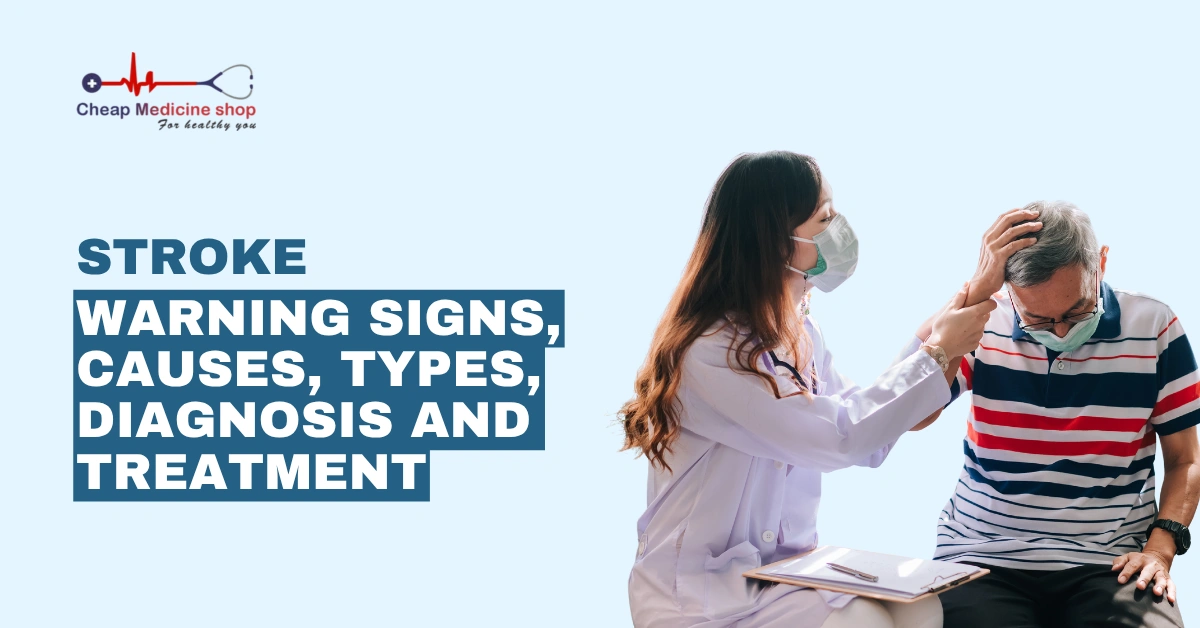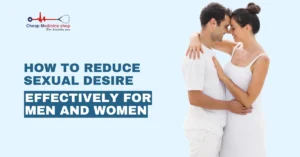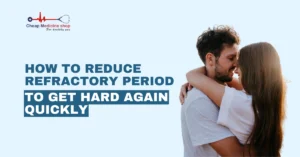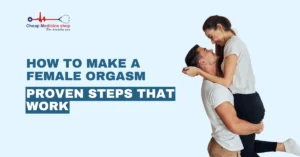Every 40 seconds, someone in the United States suffers a Stroke, making it one of the leading causes of death and long-term disability. Also called a Cerebrovascular Accident (CVA), a Stroke happens when blood flow to your brain or a part of it is blocked or reduced. This medical emergency can lead to lasting brain damage, disability, or even death.
Thus, recognizing Stroke symptoms early becomes essential. In this article, you’ll learn about the different types of Stroke, their causes and unique Stroke symptoms in men and women for timely diagnosis and intervention. This can not only save someone’s life but also reduce the chances of long-term disability and permanent damage.
While the long-term effects may be mild or severe, early medical intervention can significantly improve outcomes. Moreover, up to 80% of Strokes are preventable through simple lifestyle changes, according to the American Heart Association. Thus, you will also read about common risk factors, available treatment options and the rehabilitation process for Stroke recovery.
What is a Stroke?
A Stroke or Brain Attack occurs when the brain’s interrupted blood supply prevents oxygen and nutrients from reaching brain tissue. This disruption means the affected region can’t carry out normal bodily functions, such as movement, speech, or reasoning. Moreover, without oxygen, brain cells begin to die within a few minutes, which can even lead to permanent damage.
Depending on which part of your brain is affected, Strokes can cause paralysis, difficulty speaking, memory loss, and vision or spatial problems. Thus, knowing its signs and symptoms becomes even more crucial to avoid permanent cognitive impairment.
Save up to 90% on your medicine bills

Telma 40 mg

Lipvas 20 mg
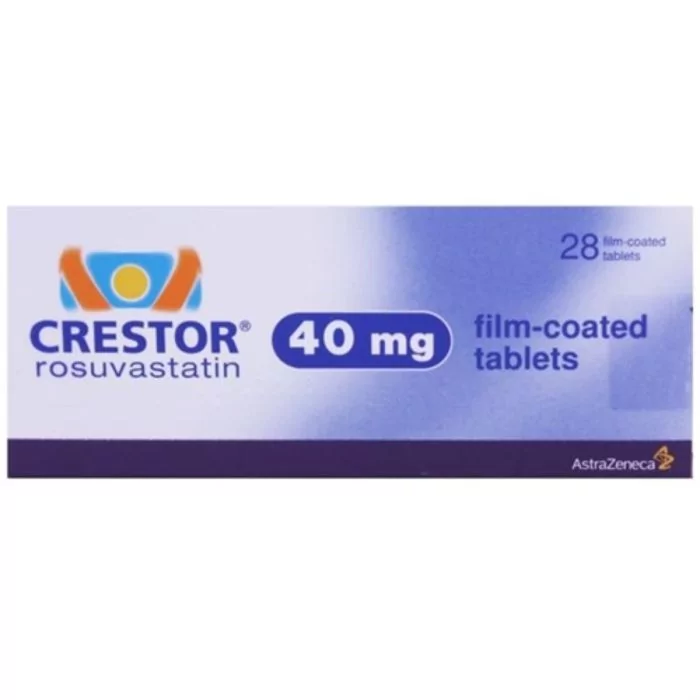
Crestor 20 mg Tablet

Tonact EZ 20+10 mg
What causes a Stroke?
A Stroke is typically caused by either a blocked artery or the leaking/bursting of a blood vessel. Some might experience mini-strokes, which are temporary blockages that often resolve on their own and thus are more difficult to diagnose.
Common physiological causes of Stroke include:
- High Blood Pressure (Hypertension)
- Diabetes
- High cholesterol and plaque buildup
- Obesity and a sedentary lifestyle
- Smoking and heavy alcohol use
- Atrial fibrillation (irregular heartbeat)
- Sleep apnea (breathing stops and starts repeatedly during sleep)
- Use of illegal drugs
In fact, about one in three adults in the US has at least one of these conditions or key risk factors of Stroke, which makes it all the more important to identify and treat symptoms promptly.
Who is at a greater risk of Stroke?
Stroke can affect anyone, but some people are at a higher risk due to lifestyle habits or genetic predisposition. Apart from the above causes of Stroke, additional risk-enhancing conditions can be divided into two categories.
Non-modifiable risk factors
These Stroke causes cannot be controlled or modified and include:
- Age: Stroke risk increases after 45 and doubles every year thereafter.
- Family history of Stroke: Genetic predisposition increases your risk of Stroke.
- Race/Ethnicity: Higher occurrence of strokes is found in African-American, Hispanic, and Asian communities as compared to others.
- Sex/Gender: Women have a higher risk post-menopause, during pregnancy or postpartum due to changes in estrogen levels, blood pressure fluctuations and clotting tendencies.
Underlying health conditions
Certain medical conditions or disorders can put you at a greater risk for Stroke. These include:
- Heart diseases: Peripheral artery disease, Carotid artery disease, Sickle cell anemia, Heart valve disease, and Congenital heart defects are more likely to cause a brain attack.
- Autoimmune diseases: These include autoimmune disorders like Lupus or Rheumatoid Arthritis.
- Clotting disorders: Thrombophilia, a condition that makes blood more prone to forming clots and Thrombocythemia which causes excessive platelet production, increases your chances of Ischemic Stroke.
- Migraine with aura: Women, in particular, are more susceptible to Stroke risk from migraine-related vascular changes.
Additionally, a 2014 study of 419 Stroke cases in men and women shows that anxiety can overactivate the sympathetic nervous system, leading to a greater incidence of Stroke and other cardiovascular issues. So, taking care of your mental health becomes equally important.
Symptoms of a Stroke
Stroke symptoms often appear out of the blue as sudden nausea, confusion or agitation. It can also present with mild or non-persistent symptoms, such as trouble seeing in one or both eyes, difficulty walking, or a brief loss of consciousness. Additionally, some signs may only appear in one gender.
Stroke symptoms in men
While most Stroke symptoms are universal, some signs may appear more frequently or be uniquely reported by men or Assigned Males at Birth. These include trouble maintaining balance during physical activity, sudden loss of bladder control, low libido or erectile difficulties.
Stroke symptoms in women
Women or Assigned Females at Birth may experience all typical Stroke symptoms but also report additional or atypical signs that can delay diagnosis. These can be generalized fatigue or sudden sleepiness, sudden shortness of breath without exertion, hiccups accompanied by chest pain and sudden behavioral changes.
Signs of a Stroke
Knowing how to spot the early warning signs of a Stroke can help save lives, yours as well as someone else’s. Use the globally recognized F.A.S.T. method as follows:
- F – Face Drooping: Is one side of the face numb or drooping?
- A – Arm Weakness: Is there weakness in one arm, especially when you or they try to raise their hands?
- S – Speech Difficulty: Is your speech slurred, or is the person hard to understand? Ask them to repeat a sentence if needed.
- T – Time to call 911: If you observe any of these, contact emergency services immediately.
Also read: Break more myths around what a Stroke could look like. Read Is Eye Twitching a Sign of Stroke?
Types of Stroke
Strokes are medically categorized into three major categories based on their causes: Ischemic, Hemorrhagic and mini-stroke. Each type impacts the brain differently and varies in severity, symptoms, and risk of recurrence.
1. Ischemic Stroke
Ischemic Strokes happen when a blood clot or a narrowed artery blocks the blood supply to your brain. They account for almost 87% of total reported cases. Symptoms last more than 24 hours and might cause permanent brain damage if not treated quickly. Its risk of recurrence is high without proper management of Hypertension, High Cholesterol and other underlying conditions.
2. Hemorrhagic Stroke
Hemorrhagic Stroke occurs when a blood vessel in your brain ruptures, resulting in bleeding within or around the brain. Common triggers include chronic High Blood Pressure, Aneurysms, and ArterioVenous Malformations (AVMs). While less common (only about 13% of all Strokes), Hemorrhagic Strokes tend to be more fatal or disabling.
Rapid and acute in onset, these often require emergency surgery or intensive care. Your risk of recurrence depends on how well your blood pressure and other risk factors are controlled.
3. Transient Ischemic Attack (TIA)
TIA, also known as a mini-stroke, is a condition in which the blood flow is temporarily blocked, often caused by a small clot that dissolves or moves on its own. While its symptoms last less than 24 hours and usually disappear within 30 minutes, the risk of recurrence is high.
TIA is often called a Warning Stroke, as nearly 1 in 5 people experience a full Stroke within 90 days without preventive treatment. Additionally, about 240,000 people in the US have a mini Stroke each year without even realizing it.
Apart from these three major categories, Strokes can also be classified as follows:
4. Cryptogenic Stroke
As the name suggests, this type of Stroke has no clearly identifiable cause, even after extensive medical testing. However, potential hidden causes include Atrial Fibrillation, heart abnormalities, or blood-clotting disorders. Its symptoms last more than 24 hours and may leave lasting impairment depending on the area of your brain affected.
Cryptogenic Strokes account for nearly 1 in 3 Ischemic Strokes. Since the exact cause remains unknown, prevention becomes difficult without ongoing monitoring and management. Thus, your risk of recurrence is high. This has become highly prevalent in young adults, particularly COVID-19 survivors.
5. Brain Stem Stroke
A Brain Stem Stroke occurs when your blood flow is obstructed either by a clot (Ischemic) or a rupture (Hemorrhagic). These Strokes are especially dangerous and can cause severe symptoms like double vision, difficulty swallowing, slurred speech, paralysis on both sides of the body, or even coma.
Diagnosis of Stroke
While the F.A.S.T. test is invaluable for at-home or preliminary assessment, you need hospital testing to confirm Stroke type and guide treatment. The standard diagnostic methods doctors use to confirm the type of Stroke are listed below.
- Neurological exam: Your doctor will ask about symptoms and when they started, check your reflexes, balance, speech, coordination, and memory, as well as arm weakness and other Stroke signs, to determine which part of the brain may be affected.
- Blood tests: Blood work includes a Complete Blood Count to check for infections or Anemia, blood glucose to detect Diabetes or low blood sugar, Platelet count and clotting time tests. Additionally, doctors may order a lipid profile or thyroid tests.
- Imaging tests: You may undergo a CT Scan, MRI, and EEG to detect abnormal brain activity or underlying heart rhythm problems.
- Heart and vascular monitoring: Since Strokes are often linked to heart problems, doctors will check your heart function.
- Advanced tests: These are used in complex or unclear cases and include Angiography, Ultrasound, and Lumbar Puncture (also known as Spinal Tap).
Treatment of Stroke
Stroke treatment depends on the type of Stroke, how quickly medical help is received, and your overall health. Once a Stroke is diagnosed, doctors will first aim to restore blood circulation, control bleeding, and prevent future Strokes.
Then, each type of Stroke is typically treated as explained below.
1. Medications for Stroke treatment
Doctors may prescribe you different kinds of medicines depending on the cause of the Stroke:
- Anticoagulants, also known as blood thinners, to reduce the risk of new blood clots. Standard options include Heparin, Warfarin, or newer drugs like Apixaban.
- Antiplatelets (Aspirin or Clopidogrel) to prevent clot formation.
- Statins to lower cholesterol levels, thereby reducing the risk of future Strokes.
- Medications to lower blood pressure or manage fluid buildup in the brain, especially after a Hemorrhagic Stroke.
2. Intravenous Thrombolysis (IV tPA) for Ischemic Stroke
For an Ischemic Stroke, IV administration of Tissue Plasminogen Activator (tPA) can help dissolve the clot that is blocking your blood flow. It is most effective when given within 3 to 4.5 hours of symptom onset. However, it is not suitable for Hemorrhagic Strokes due to bleeding risk.
3. Advanced treatments for Stroke
In some cases, additional interventions may be needed:
- Mechanical Thrombectomy, if a large blood clot is causing a blockage.
- Clipping to stop bleeding from an Aneurysm (internal bleeding from the weakened wall of a blood vessel).
- Endovascular coiling for hard-to-reach or high-risk aneurysms.
- Decompressive surgery to remove part of your skull to relieve pressure, if there’s swelling.
- Blood transfusion if the Stroke is linked to blood loss or certain blood disorders.
Stroke Rehabilitation: Process, Timeline, and Signs of Recovery
According to the CDC, Stroke is a major cause of long-term disability, with more than half of survivors over 65 experiencing reduced mobility. So, healing after a stroke doesn’t happen overnight; it requires time, patience, and support.
Rest assured, with a personalized rehabilitation plan and support from your family, you can regain significant function. Rehab begins as soon as you are deemed stable medically, usually within 24 to 48 hours, and a typical plan can be outlined as follows.
| Type of therapy | Timeline | Professional Involved | Focus Area |
| Physical therapy | 1 week to year+ | Physical Therapist | Movement, strength, balance |
| Occupational therapy | 2-4 weeks post Stroke | Occupational Therapist | Daily living activities |
| Speech therapy | Immediate to long-term | Speech-Language Pathologist | Communication and swallowing |
| Cognitive therapy | As needed post-Stroke | Neuropsychologist or Occupational Therapist | Memory, attention, reasoning |
| Mental health counseling | At any stage, as needed | Psychologist, Psychiatrist | Depression, anxiety, adjustment |
| Recreational therapy | Mid-to-late rehab | Recreational Therapist | Social participation, leisure |
It is quite normal to face setbacks, especially depression or mood swings, in your rehabilitation journey. But with consistency and support, you can return to an active life. In fact, 10% of Stroke survivors make a full recovery, while 25% recover with a few minor impairments.
How to prevent a Stroke: Life’s Essential 8
The best treatment for Stroke is prevention. The good news is that approximately 80% of Strokes are preventable with simple lifestyle changes. These include exercising and eating foods to control blood pressure, cholesterol and blood sugar, quitting smoking, limiting alcohol and managing stress. The American Heart Association calls this framework the “Life’s Essential 8,” a guide to keeping your heart and brain healthy to prevent a Stroke.
Conclusion
Stroke is an extremely serious medical emergency where every second counts. It occurs when blood flow to the brain is blocked by a clot or when a blood vessel ruptures and causes bleeding. Some people may also experience a temporary blockage, often referred to as a mini-stroke.
The most common causes are High Blood Pressure, Diabetes, high cholesterol, Obesity, and heart rhythm problems. Additionally, race, age, autoimmune disorders, and clotting disorders can also heighten the risk.
Recognizing early signs such as sudden weakness, facial drooping, slurred speech, vision trouble, or loss of balance using the F.A.S.T. method ensures immediate action and can save lives. Moreover, adopting a healthy lifestyle, managing existing health conditions, and knowing when to seek help, leads to proper diagnosis, treatment and prevention.
Stroke recovery includes early and consistent effort, including physical, occupational, and speech therapy that helps you regain motor skills, mobility and quality of life.
Frequently Asked Questions
What is the Golden Hour of Stroke?
The Golden Hour is the critical first 60 minutes after Stroke symptoms show up. Prompt medical treatment during this window, especially for Ischemic Strokes, can restore blood flow quickly. This greatly improves the chances of recovery and reduces the risk of permanent damage.
How long can a Stroke last?
Stroke symptoms can last from a few minutes to several days or longer. Transient Ischemic Attacks (TIA) are brief and might not cause much harm, while severe CVAs can cause lasting impairments. Accordingly, recovery timelines vary widely depending on Stroke severity and treatment.
What time of day is most common for a Stroke?
Most Strokes occur in the early hours of the morning, especially between 6 am and noon. There is a noticeable peak between 3 am and 6 am, making this a high-risk period for Stroke onset.
What are the 5 warning signs of a mini Stroke?
Warning signs of a mini Stroke (TIA) include sudden numbness or weakness, vision changes, confusion or trouble speaking, dizziness or loss of balance, and a sudden, severe headache. They often pass quickly but require urgent medical evaluation to prevent recurrence.
What’s the difference between a silent Stroke and a mini Stroke?
A silent Stroke causes brain damage without noticeable symptoms and can impair thinking over time. A mini Stroke (TIA) produces temporary Stroke symptoms that resolve within 24 hours, but act as a warning signal of high risk for a full Stroke.
What to do immediately after a Stroke?
You or the person who feels a Stroke is coming should lie down on the side. Do not eat or drink anything to avoid choking. Call 911 immediately; do not drive yourself. If they get unconscious, check for breathing and give CPR if needed. Note the time of symptom onset for proper treatment.
Can you die from a Stroke?
Yes, Strokes can be fatal, and you could die from Hemorrhagic ones or severe Ischemic attacks. Strokes are as serious as heart attacks because both involve blocked or ruptured blood flow, causing damage to vital organs, the brain and heart, respectively. Immediate treatment is thus critical to reduce the chances of death and disability.
Cheap Medicine Shop only refers to credible, authoritative sources for our content. If you’re curious about how we ensure the integrity of our content, we encourage you to read our Content Information Policy.

